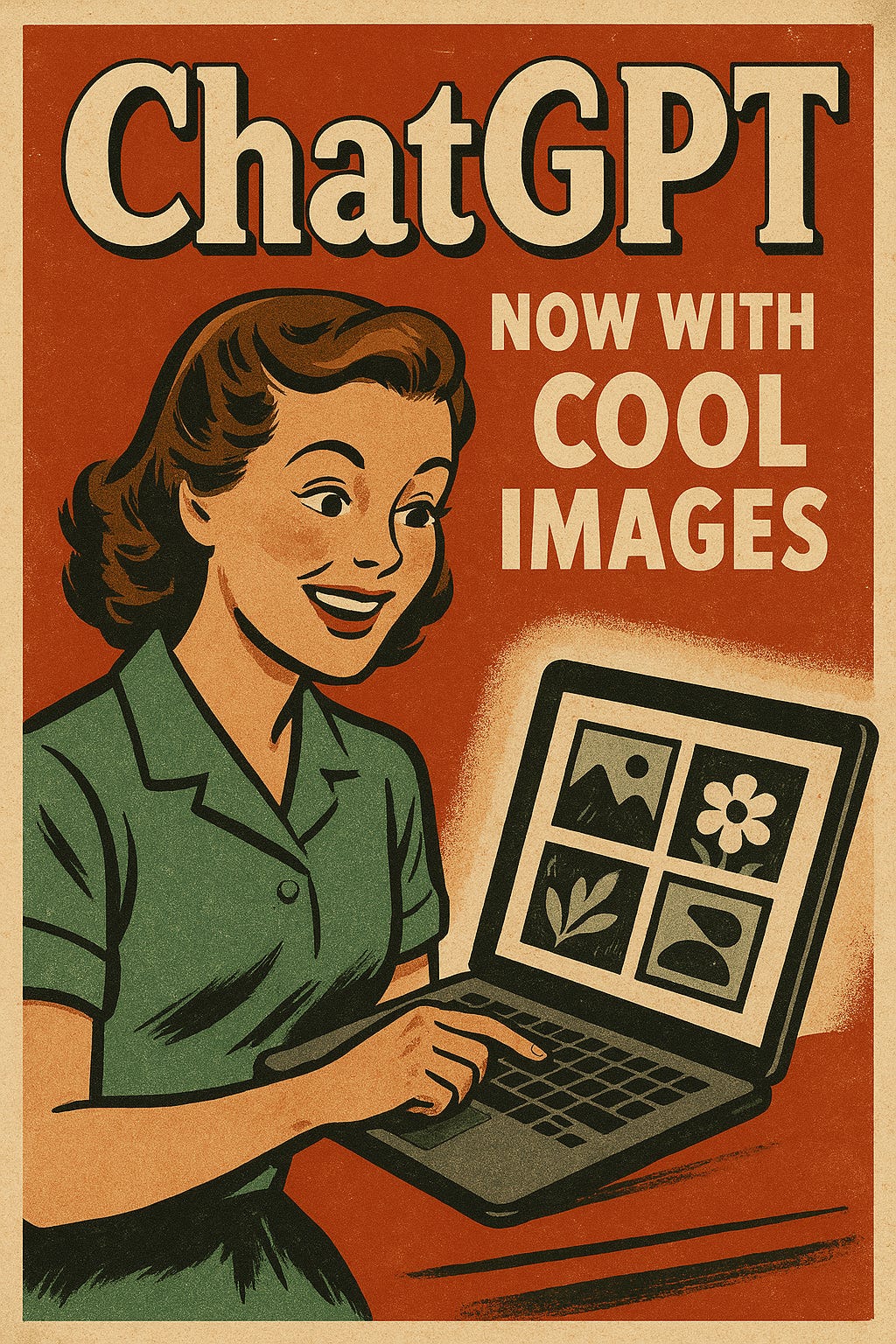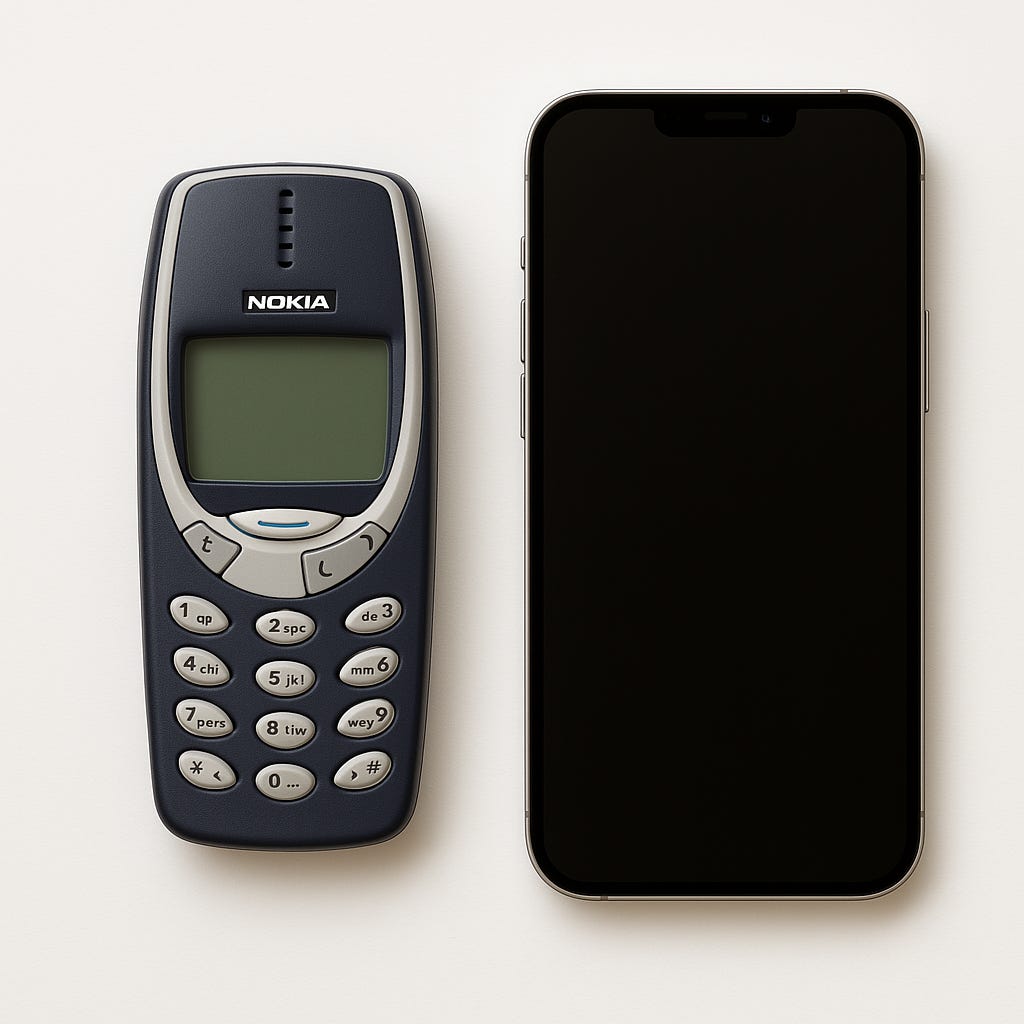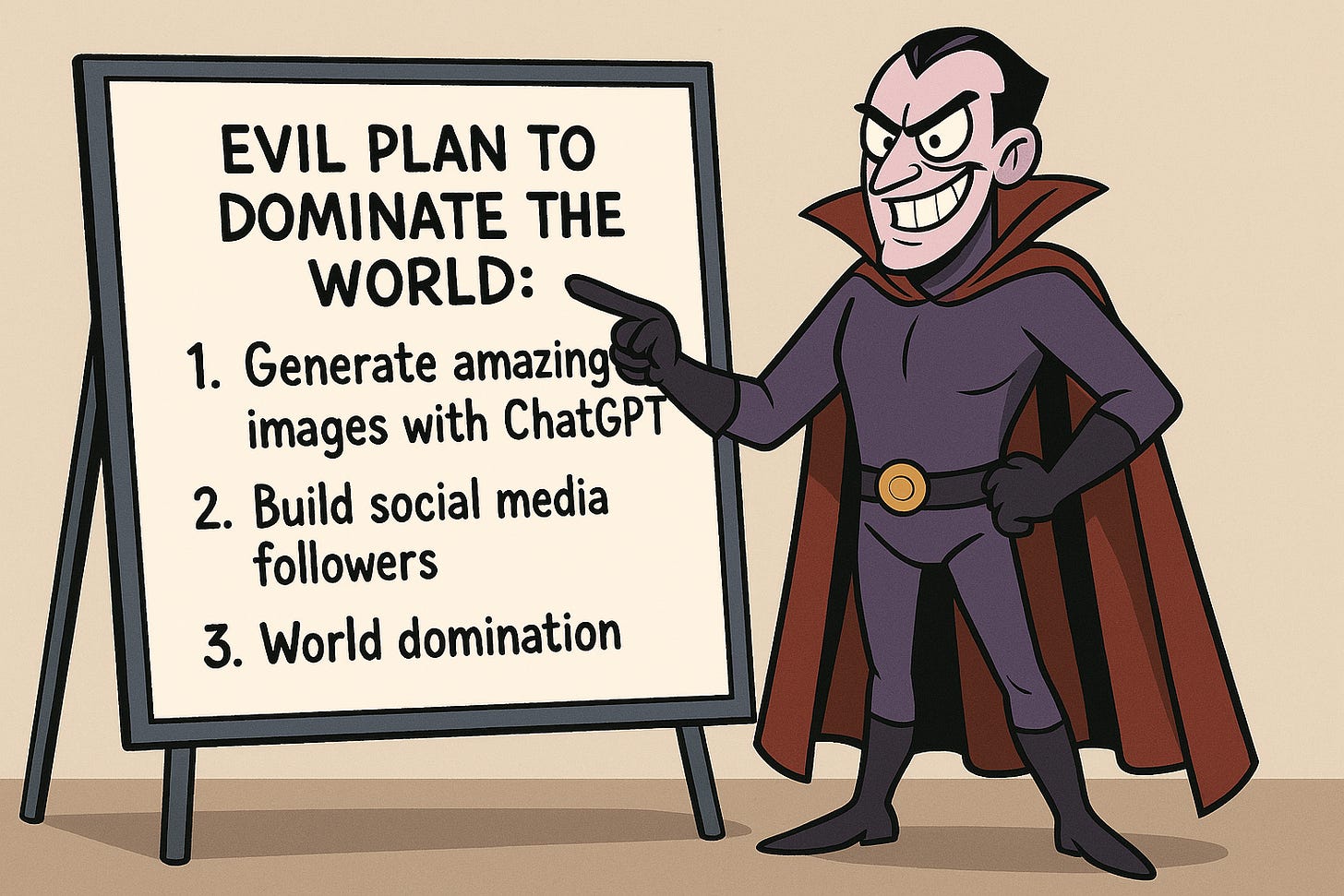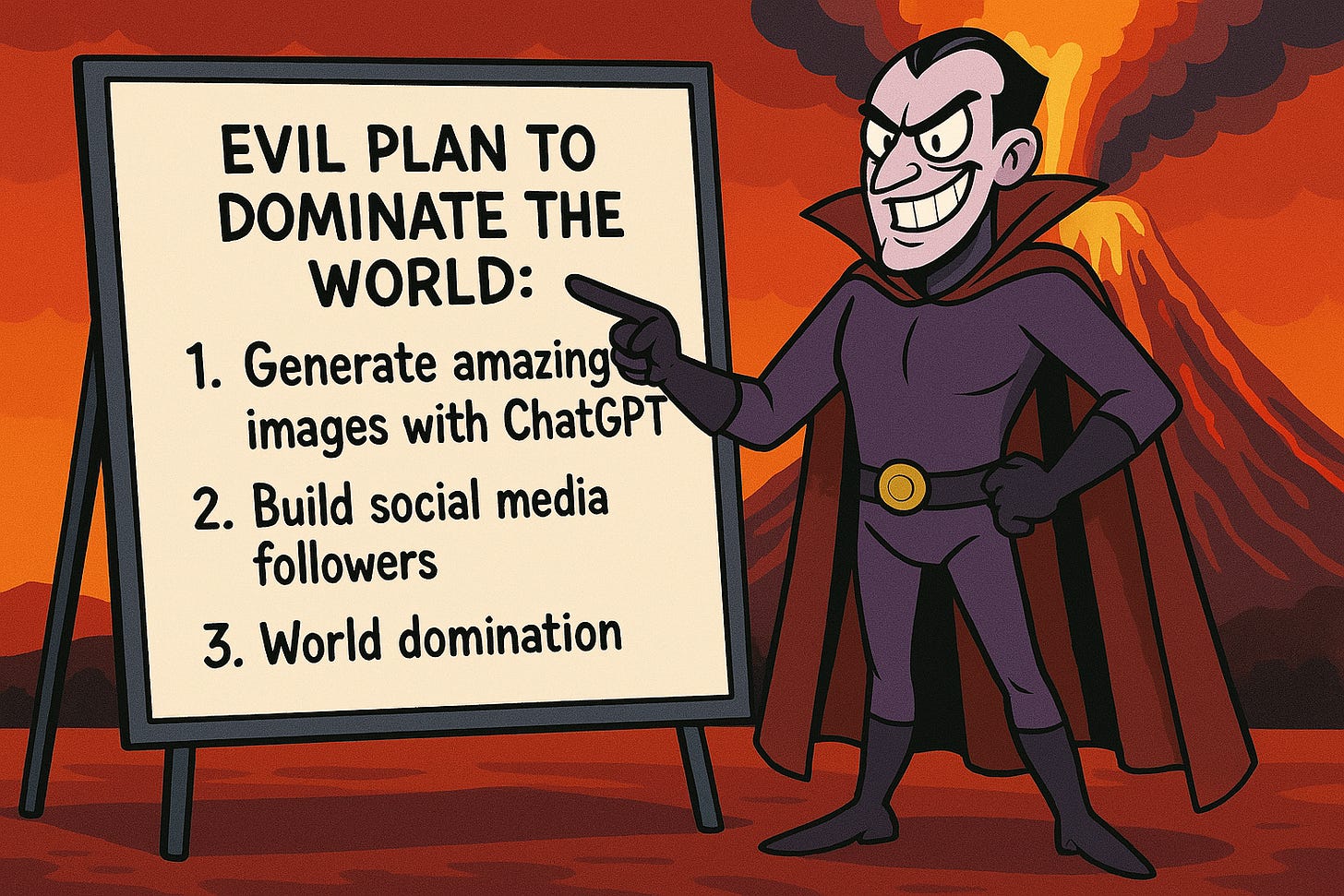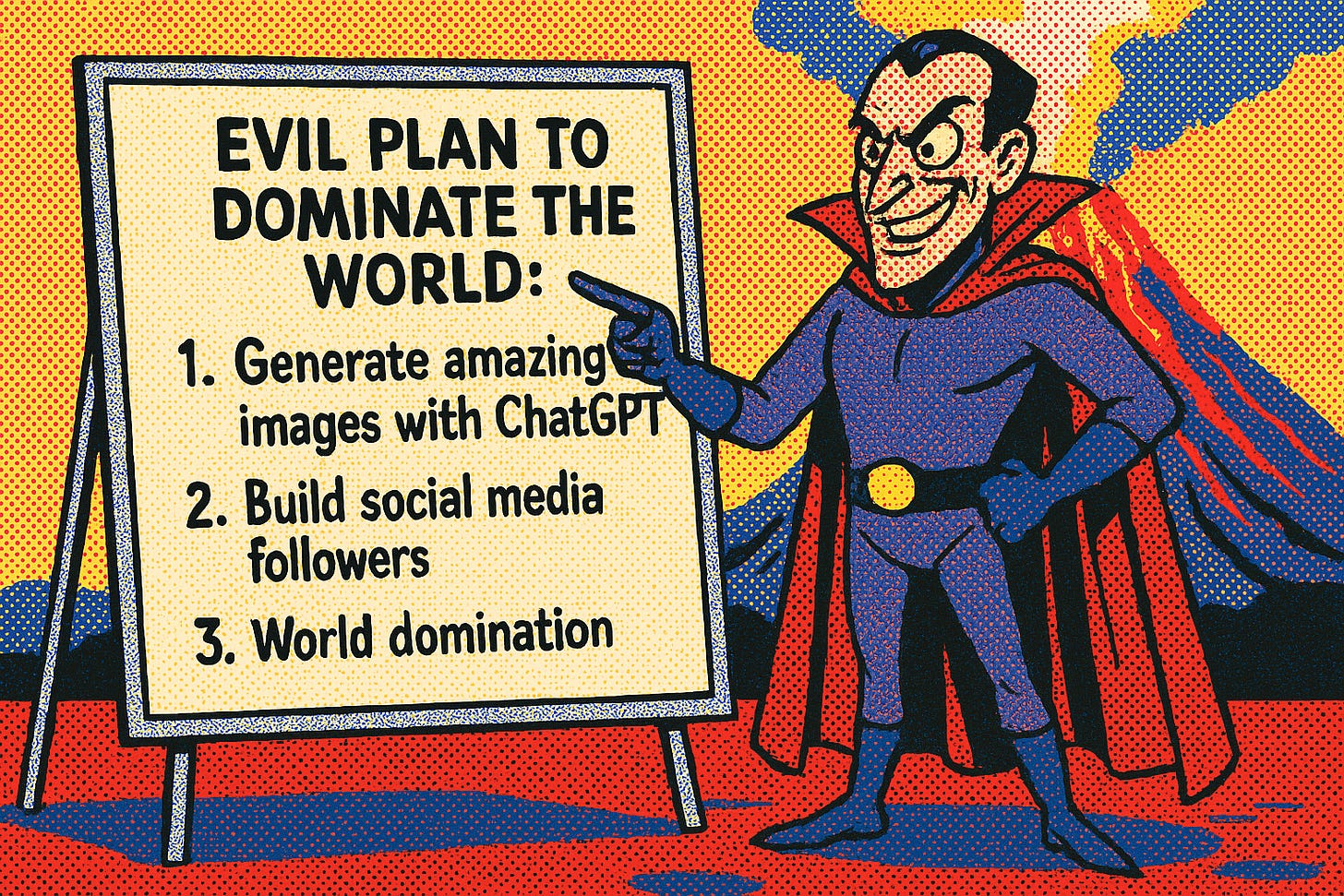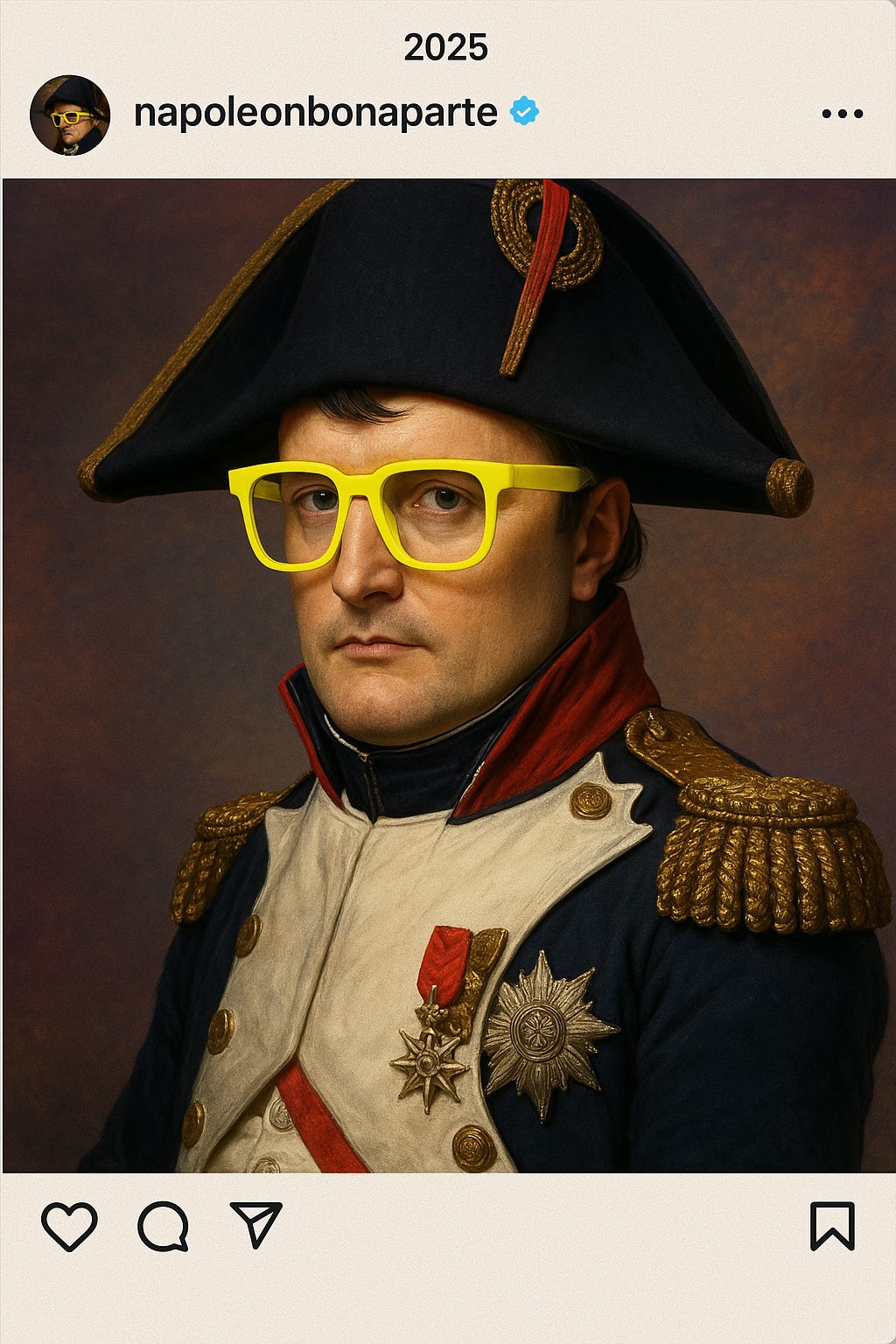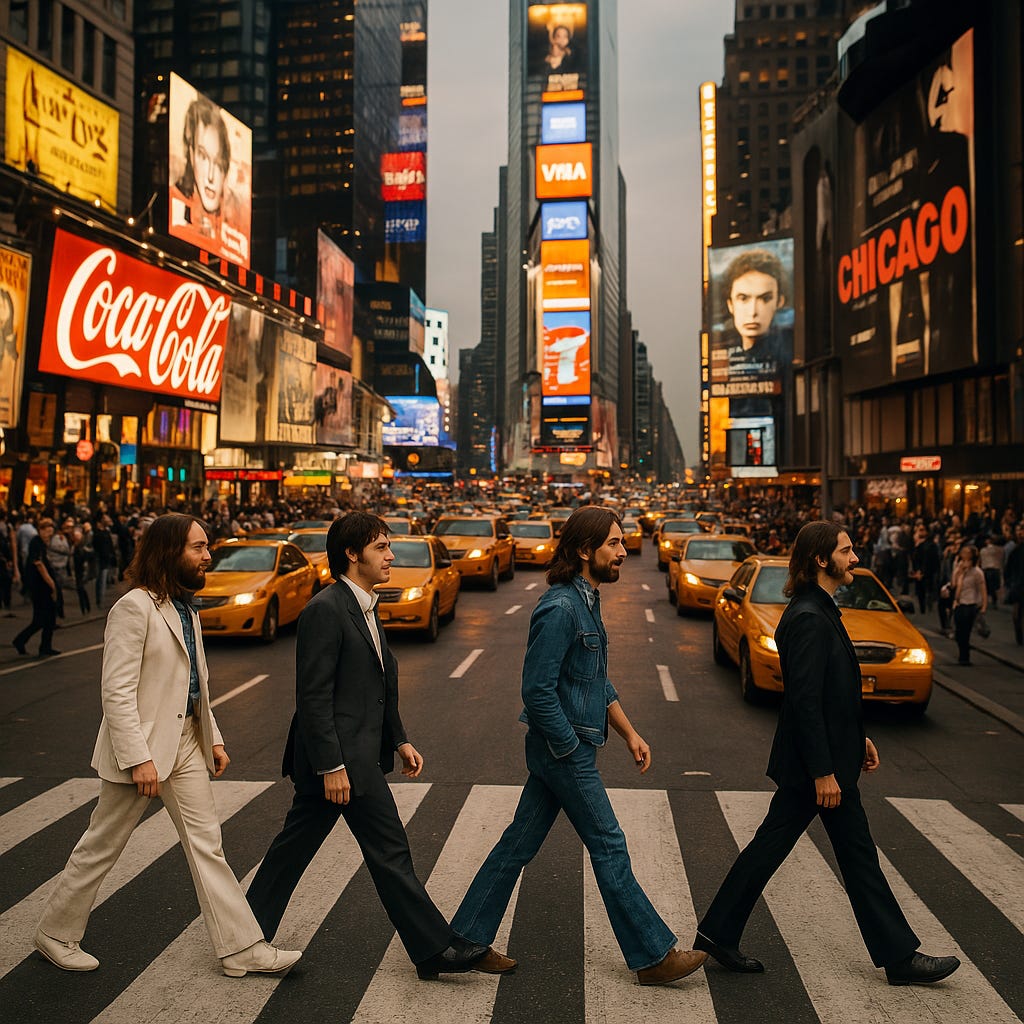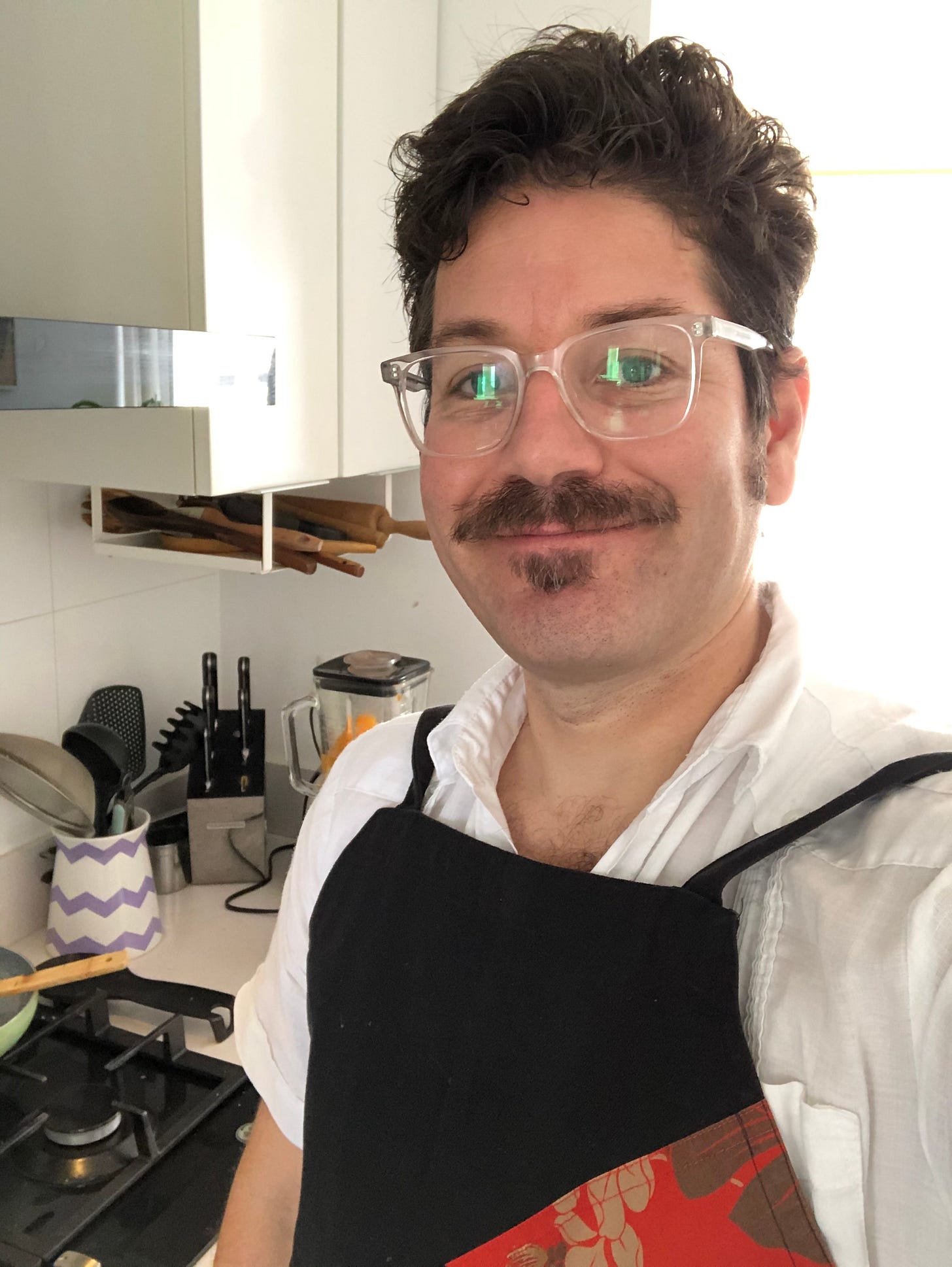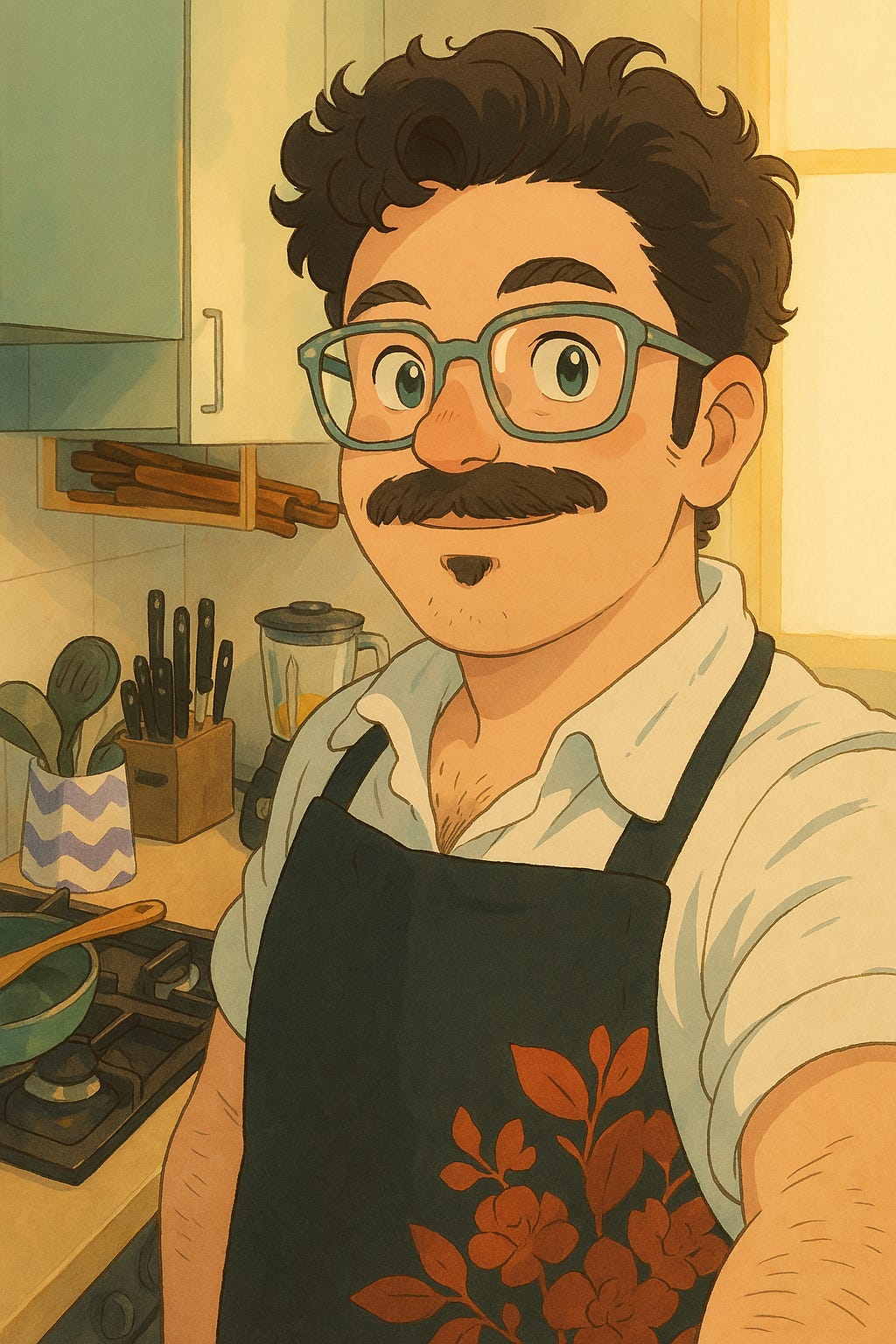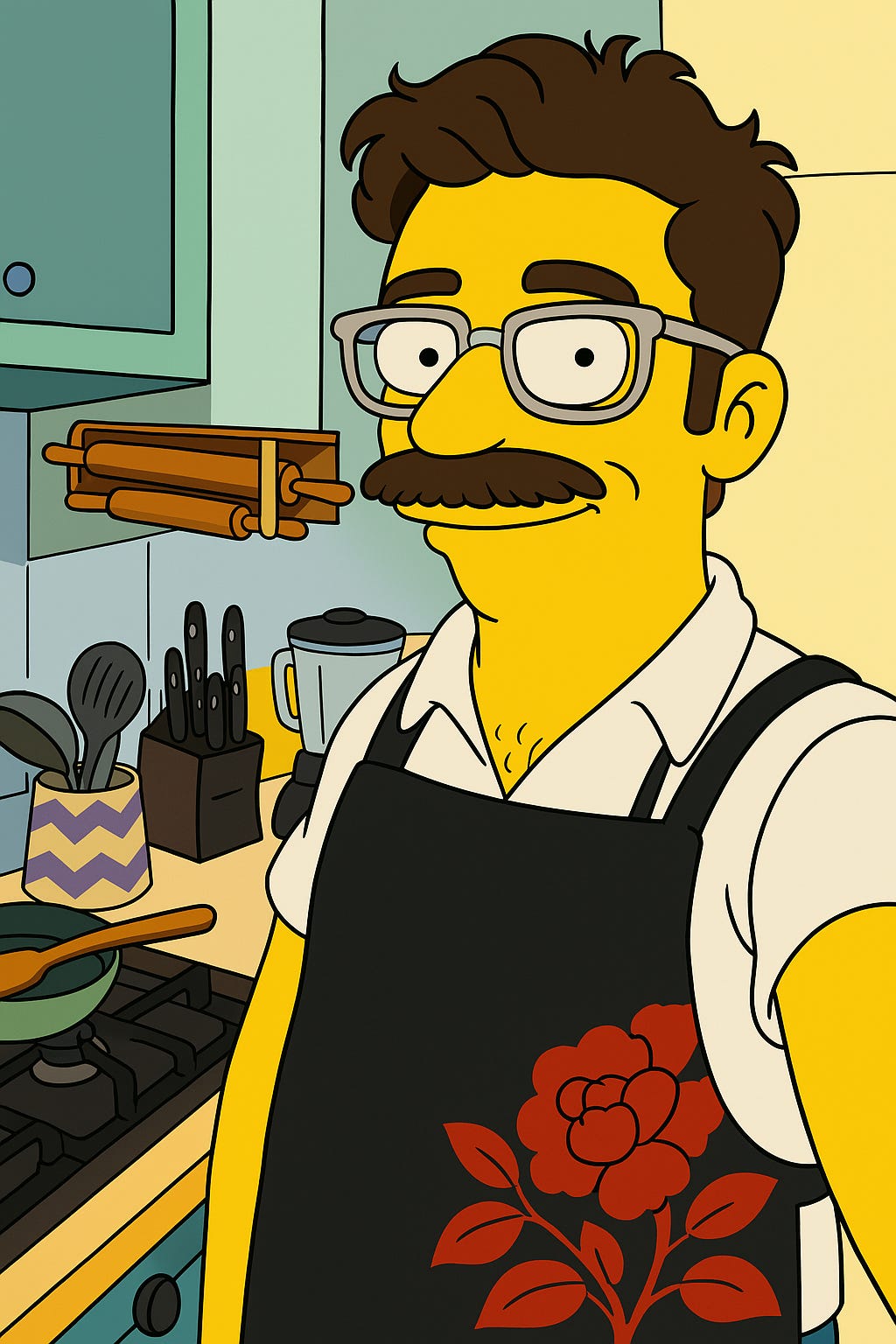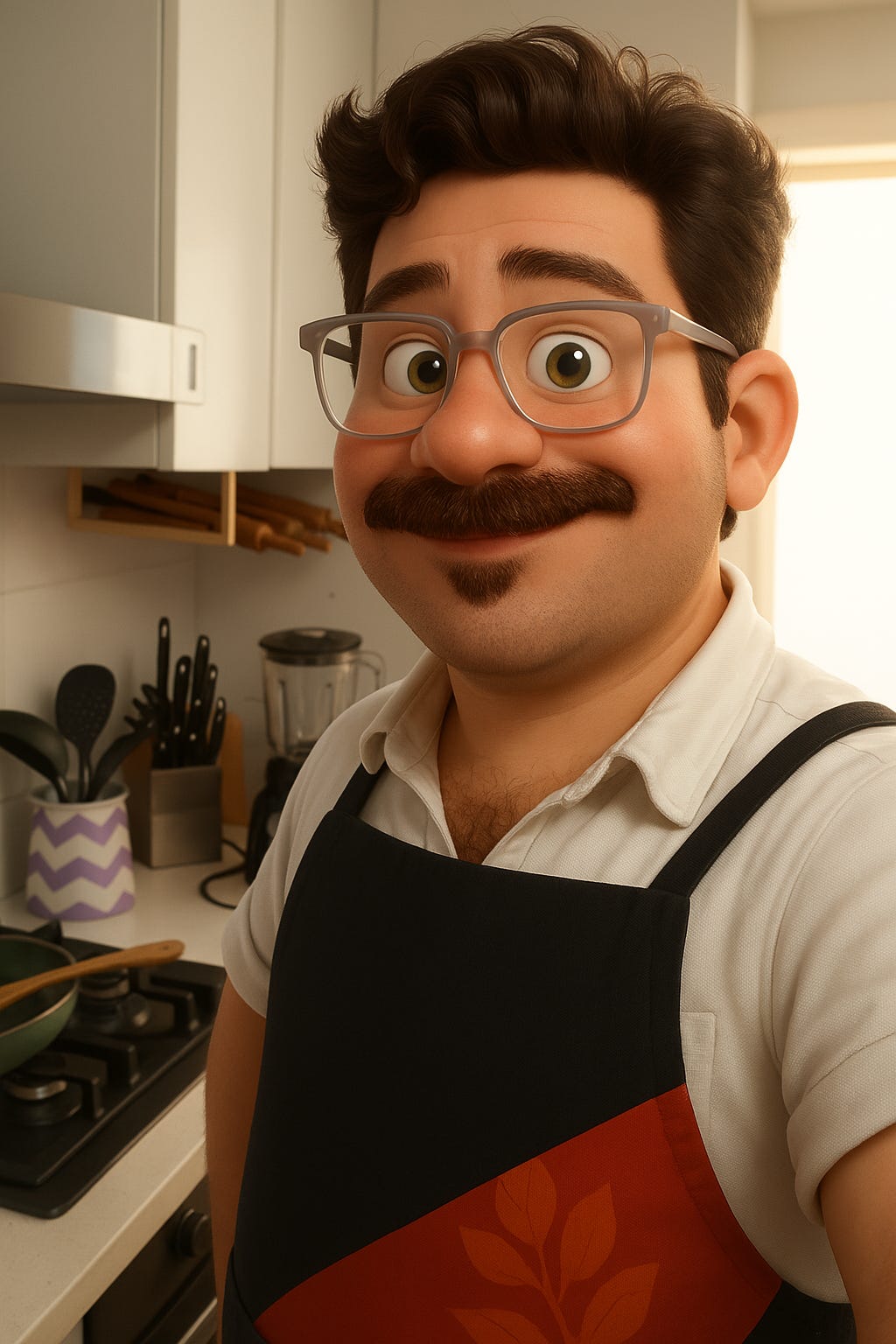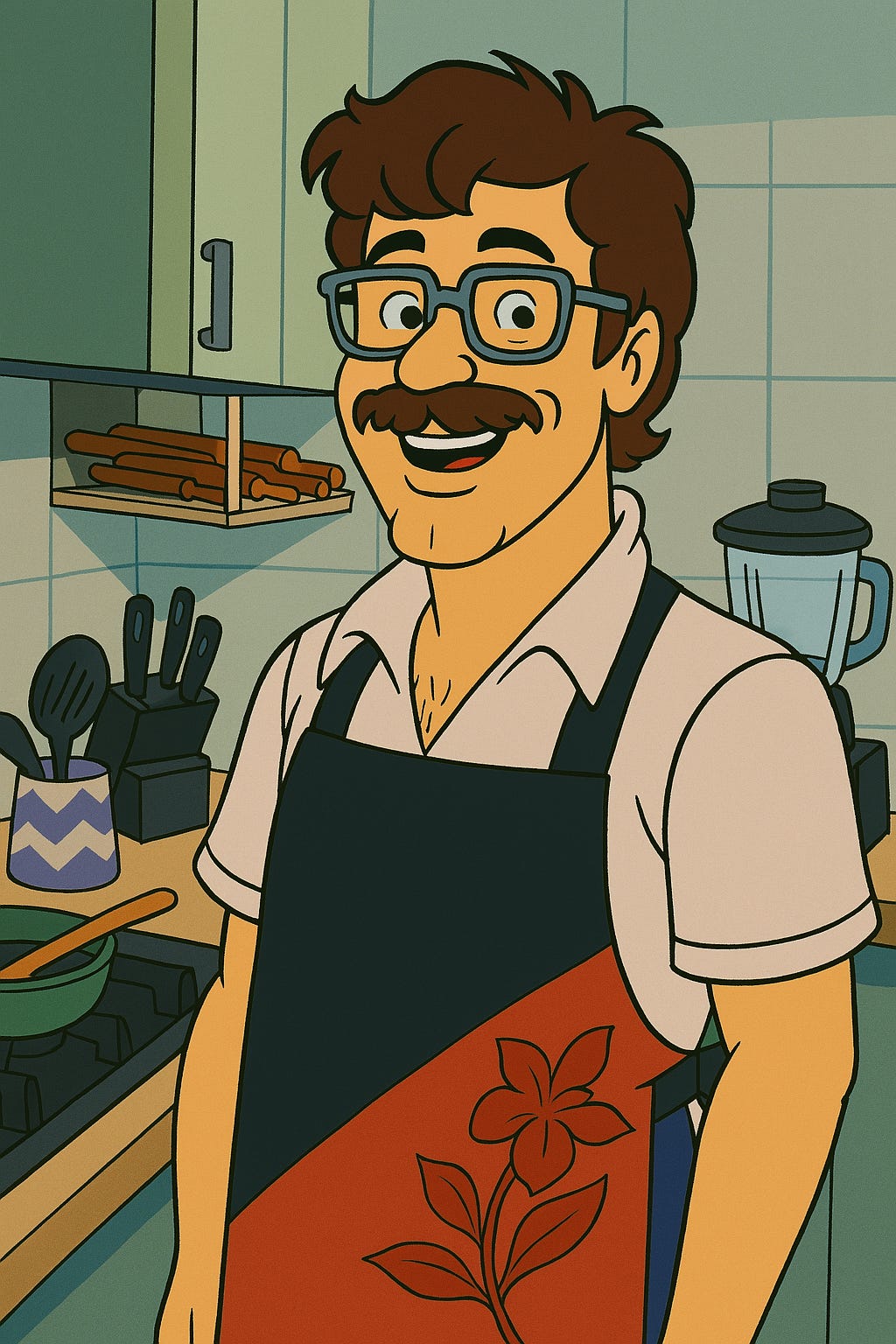ChatGPT Finally Learned How to Create Images That Actually Rock
A peek at the image generator that's dropping jaws everywhere (yes, even mine)
Missing the ChatGPT image generation buzz? You've either been meditating in a cave or living under a rock. No joke—my social feeds are absolutely swamped with these images. Time to see what all the fuss is about!
Speaking of emotions, have you ever had to admit you were completely wrong about something? That's exactly what I'm doing right now, and surprisingly, I'm actually enjoying it.
For ages, I've sworn by Midjourney for creating images, telling everyone it was the gold standard (despite its learning curve). Whenever anyone asked about ChatGPT's DALL-E 3 image generator, I'd roll my eyes and say it was so... let's call it "underwhelming"... that it wasn't worth your time. I couldn't even be bothered to write about it. Why waste the keystrokes, right?
Then last week, OpenAI dropped image generation with ChatGPT-4o and... KABOOM! Suddenly I'm creating images that rival or outshine my Midjourney work, but with a game-changing difference: everything happens right inside the conversation.
We're not talking about a minor upgrade. This is like trading in your clunky Nokia brick for the latest iPhone. The quality jump is so dramatic that here I am, enthusiastically recommend it! Well played, OpenAI, well played...
What makes this update mind-blowing isn't just the stunning image quality—it's how it actually gets what you're asking for. Request text in your image? Done. Ask to keep the same scene but swap characters? No problem. It's literally like having a personal graphic designer on standby.
Oh, and that Nokia/iPhone comparison image above? Yeah, I just created that in ChatGPT moments ago.
Super cool, right? Let's dive into what this model can do and why you should absolutely start playing with it.
What really changed in ChatGPT
What makes this new image generator truly special? In a nutshell, it finally understands what you actually want.
Bye bye hieroglyphics, hello perfectly readable text
Ever tried creating an image with text using DALL-E or Midjourney? I bet you ended up with gibberish like "Wxtbz Ltmnp" instead of your carefully crafted message.
ChatGPT-4o finally cracks this code. Now you can request posters, signs, and even whiteboards plotting world domination—and the text comes out crystal clear every time.
Create an image of a cartoon supervillain (with cape and dramatic pose) standing next to a whiteboard. The whiteboard should clearly show "EVIL PLAN TO DOMINATE THE WORLD:" with three numbered steps: "1. Generate amazing images with ChatGPT", "2. Build social media followers", "3. World domination".The Conversation Actually Matters
Imagine you just created the perfect supervillain explaining his evil plan, but you think "it would be better with a volcano in the background." Before, you would have had to write the ENTIRE prompt again, and I'm sure you'd end up with a completely different villain.
With ChatGPT, you simply say "add an erupting volcano to the background" and—bam!—same villain, same whiteboard, same evil scheme... just with an epic volcano that perfectly enhances the villainy vibe.
Take the same image without changing the character or whiteboard and put an erupting volcano in the background.It Actually Understands Styles
If I ask ChatGPT for an image in Roy Lichtenstein's style, I don't need to spell out that I want those iconic comic book dots, bold primary colors, and thick black outlines. It just gets it.
Now convert that image to Pop Art in Roy Lichtenstein's styleThis intuitive understanding makes creation ridiculously easy. You can simply say:
"A scene in Studio Ghibli style"
"A vintage car poster"
And you'll get exactly what you're picturing in your head—no need to meticulously describe every tiny detail of the style.
I can already hear you thinking: "Hold up, Germán... Roy Lichtenstein? Studio Ghibli? What about copyright issues?!" Don't worry, I promise we'll get into all that legal stuff, but first let me show you more of what this thing can do...
Playing with ChatGPT
The most fun part about getting a new toy is testing it right away, don't you think? I've only had a short time to experiment, but here are some of my favorite tests.
Note: This section contains AI-generated images mimicking well-known styles.
Create an image of Napoleon Bonaparte as an Instagram influencer in 2025. Use neon yellow glasses.Create an image of the Beatles crossing Times Square in New York during rush hour, as if it were Abbey Road.Now, what would happen if I gave it an existing image and asked it to transform it?
The Original Image
I uploaded this selfie I took while cooking a few years back (yes, I rocked a mustache back then, and I solemnly swear this look will make a comeback someday).
Here are the prompts I used and what came out:
Convert this image to Studio Ghibli style.Now with The Simpsons styleNow with Pixar styleNow with original Scooby Doo styleI think the Pixar style added a few pounds! They say cameras add ten pounds, but I wasn't expecting a complete transformation...
...Studio Ghibli, The Simpsons, Pixar, Scooby Doo. Looks like we need to talk about the elephant in the room: copyright issues.
Is What I Just Did Actually Legal? (I sure hope so)
Can I really ask AI to mimic these well-known styles?
The short answer is: it depends.
Disclaimer: I'm not a lawyer—and neither is ChatGPT. If you have serious concerns, please consult a legal professional!
Inspiration vs. Copying
When you ask ChatGPT for an image "in The Simpsons style," it's not cutting and pasting actual scenes from the show. Instead, it's mimicking the drawing style to create something entirely new (in this case, my glorious mustached selfie).
It's similar to asking an artsy friend to draw you "Simpsons-style." They wouldn't be breaking any laws by using those distinctive yellow characters, they're just borrowing a visual language, not stealing specific characters. Imitating a style, on its own, generally isn't considered a legal issue.
The key difference? While human artists learn styles by watching shows and practicing for years, ChatGPT-4o was trained directly on millions of Simpsons images (and other styles). That's where things get legally fuzzy.
What does the law say?
The uncomfortable truth is that our current laws weren't designed for a world where AI can learn and replicate artistic styles in seconds. We're in uncharted territory. (Let's face it, laws always play catch-up with technology.)
Here's what most experts generally agree on:
Specific characters are protected (you can't generate Homer Simpson or Totoro)
Specific artworks are protected (you can't replicate a scene from Toy Story)
General styles usually aren't protected (like "manga style" or "cubist style")
The gray area? When you generate images with highly distinctive, immediately recognizable styles from specific studios (looking at you, Studio Ghibli).
How I see it
For experimentation and learning: I use any style I want when just playing around (like my mustache photo makeovers)
For social media: I clearly label these as "AI-generated images inspired by [style]"
Out of basic respect: I acknowledge that real human artists spent years developing these distinctive styles
The reality is both laws and society are still figuring this all out. In a few years, we'll likely have clearer guidelines about what's acceptable with AI-generated images—and about the ethics of training these models on artists' work in the first place.
Meanwhile, my advice? Have fun experimenting, but be thoughtful about boundaries, especially if you plan to use these images beyond personal enjoyment.
Before wrapping up, I should mention that this technology still has a few quirks:
A Few Current Limitations
Edge clipping issues: It sometimes trims the edges of longer images (like posters), particularly at the bottom
Creative liberties: It occasionally adds details you never asked for
Complexity overload: When you ask it to generate images with more than 10-20 different concepts into one prompt, it gets overwhelmed and starts mixing things up
Still, compared to what we had before, these are just small details. I'm pretty confident OpenAI is already patching these issues as we speak.
See you next time!
G
Hey! I'm Germán, and I write about AI in both English and Spanish. This article was first published in Spanish in my newsletter AprendiendoIA, and I've adapted it for my English-speaking friends at My AI Journey. My mission is simple: helping you understand and leverage AI, regardless of your technical background or preferred language. See you in the next one!





